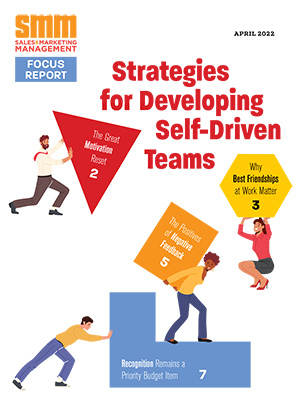“Any customer can have a car painted any color that he wants, so long as it is black.”
This is the infamous quote by Henry Ford, and if you know about Ford’s production techniques, you definitely understand what he means. The Model T was mass produced and it launched the industrial juggernaut of the century. This was not just used for one mode, it became the baseline strategy for a number of leading organizations.
“The customer can have any product or service they want, as long as they let us tell them what they can have.”
The tables have still not been turned, even with all of the technological advances that the world has seen in the past two decades, even though the overall business culture has been upgraded by the introduction of the internet. The charge of sales is now going to the consumers and it is they who are driving sales conversations. Why so? Because the customer of today is very different than one from 20 years ago because he/she has awareness, entitlement and a sense of power. The internet has made them aware. The customer is likely to be completely or at least partially aware of their choices and solutions. This know-how makes them not just want to settle for a product just because the salesperson says that it is the best one. Experiential marketing has also transformed, as discussed further.
To be fair, the customers are not looking for products. They are more interested in finding a solution to a specific problem. This is why a sales professional needs to kick up their strategy and not just push the product to the customer. The very first thing that needs to be done to conduct successful business is to adhere to customer’s needs, then taking an approachable method to create a customized product while at the same time provide a solution to their problem.
The transforming trends in sales and marketing have helped us identify these factors:
1. Instead of thinking about how to sell the product, focus on how the product can help the customer.
With this approach, you will avoid being locked into the product and it will help you be more flexible around the needs of the customer.
In a fairly short time, the methods of selling a product have changed from a focus on products or services to a run for creating outcomes and solutions. A successful salesperson of today is not just an expert in pushing the product, they want to be known for their ability to recognize the needs of the customer and provide them with a customized solution for the exact outcome they need or want. But the professional also uses those customizations on a broader level in the industry to deliver the generalized solution to other customers.
2. Recognize that sales cycles have become longer.
In terms of how the sales process has changed, the creative and collaborative process makes the sales process to take longer than before, this includes commodities too. You need time to learn about the needs of the customer, hence, providing customized solutions.
You may even need to hold regular conversations with the customers over a few weeks of time to actually understand the expectations. The most important tool for this is learning to ask the right questions, understanding answers, finding solutions and creating a customized solution. When the solutions come into order, the feedback from the customer or their organization is also a requirement. This helps in understanding the deficiencies in the product and making the customizations better suited to the customers which will take the revenues higher annually.
3. Instead of the old sales fashion, discuss genuine concerns of the customers.
The first thing you need to realize is that the customer should feel in charge and comfortable during the process of sales. A few sales professionals may just be interested in listening to the customer as long as the direction of the discussion is heading towards a potential sale, but since the customers are now more aware, they will not tolerate being manipulated. Once they find out that you are only setting up a temporary attraction to make a sale, and not actually understanding or catering to their needs, their trust will be lost and they will resist the efforts.
You need to be truthful to the customer because, in the age of the internet, they can find out the truth on their own anyway. And it would be a lot better coming from you. It is a hard thing to do but in the long run, it will help you gain more credibility and trust. Even though the competition of being the best sales professional makes them competitive, never forget that overselling the product will only harm the credibility in the long run. This goes a long way since the customer will remember your integrity the next time you conduct business.
4. Realize when to show your expertise and when to defend.
Being a professional in sales and marketing with a lot of experience, you should know that there will be certain situations where you will have to use your extensive knowledge to recommend a solution. this stage comes after the long term relationship has been built and the product provides the outcomes that the customer prefers. But you have to make sure that the recommendations provided by you are given in the most respectful and non-threatening way, and the experience is communicated through it positively.
However, in the end, the customer is the expert on their business needs and knows better about what sort of outcome they need and which product can provide them with a relatively better solution to their problem. You can only go as far as recommendations because the customer has their free will to choose among their options. If the relationship with the customer has been flexible and collaborative through its process, you can let the customer decide on their own and be sure they will make the right choice.
Lewis Robinson is a business consultant specializing in CRM and sales. He has started multiple corporations and currently freelances as a writer and personal consultant.


